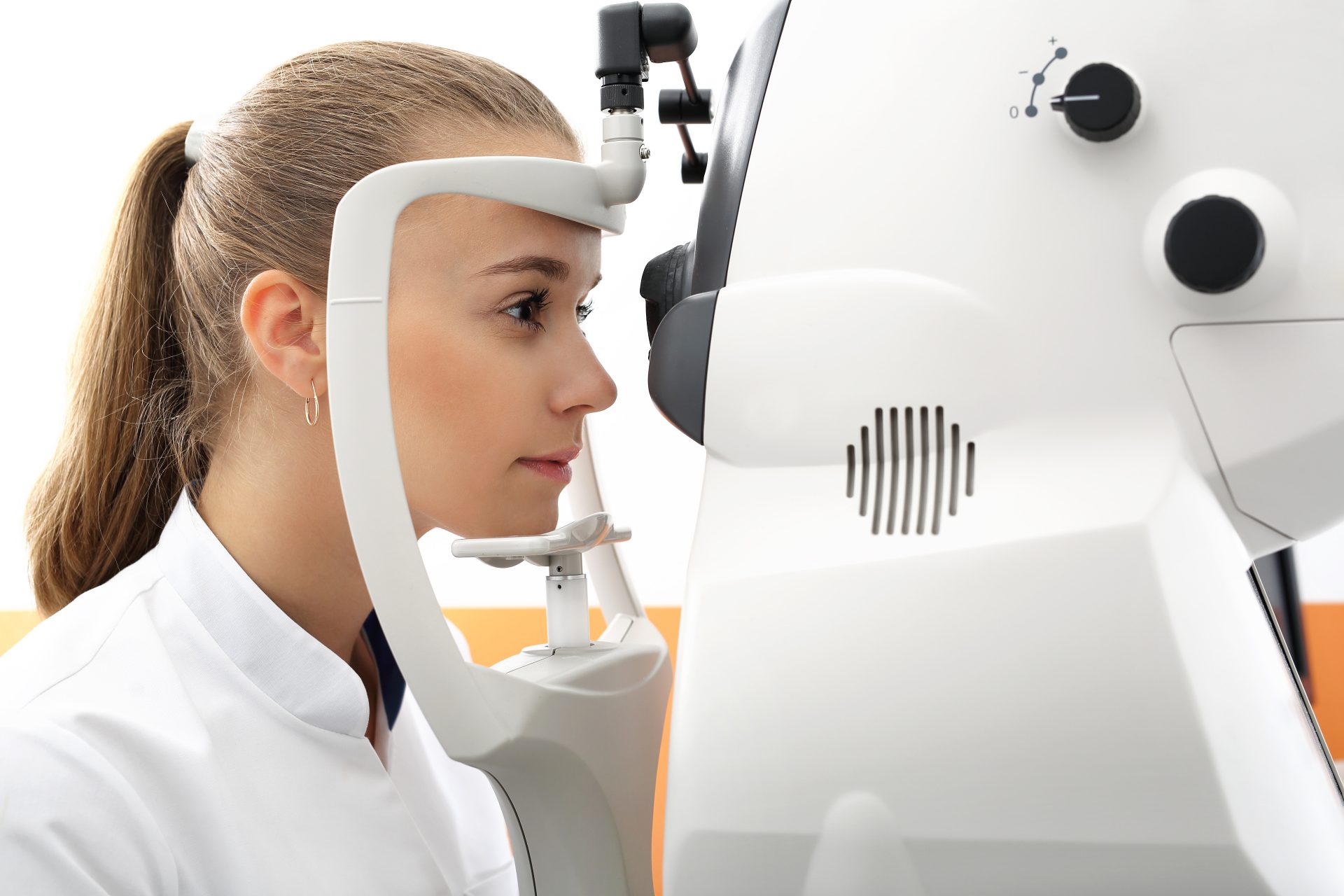All stores have a visual fields machine, but when locuming you could be presented with one you’ve never used or seen before. All the machines have different screening settings and functions, which can be confusing. With the assistance of a visual fields test guide, you’ll be more confident and familiar with using different types of machines. So, here’s a great visual fields test guide to help you get you up to speed.
There are two types of test, Supra-threshold tests (described as screening tests on some instruments) are used routinely on patients who are expected to be normal. Full-threshold tests (sometimes just called threshold tests) are useful when you either have a patient who you know has an eye disease or brain condition, who you suspect may have an eye disease or brain condition or who has shown a defect on a supra-threshold test.
Most common test conducted as a Supra-threshold test is the Central fields for a routine tested (usually covering between 20 and 30 degrees). A peripheral test may be added where a disease is expected or the patient has symptoms affecting the peripheral field.
On the Dicon and as an option on the Humphrey VFA uses A ‘quantify missed points’ feature setting on supra- threshold tests that can is between between a supra- and full- threshold test which is more reliable to use.
After finishing the test, the reliability must be checked, common rule states false positive and false negative should not be more the 33%, and fixation loss should not be more the 20%. If so test is deemed unreliable.
FDT
Tests supra threshold in 45 seconds and threshold in about 4-6 minutes.
- Normal room lighting
- Automatically occludes eye
- 17 regions tested within central 20 degrees
- High sensitivity and specificity for identifying glaucomatous defects.
- Excellent for SCREENING
- Standard automated, SWAP, flicker, goldmann automated or manual kinetic
- Automated eye tracking
- Faster threshold testing (2:30): TOP test strategy
- Tells you when lens is too far: eliminates rim artifact
- Also has progression analysis software
Humphrey visual field analyzer (VFA). Considered the gold standard in visual field testing. There different types of test
- Full central and peripheral. Staircase in 4dB steps reducing to 2dB after the first reversal, can easily take 15mins per eye
- Screening (supra threshold) central and peripheral. Fast Staircase in 3dB steps with only one reversal, giving a less accurate end point but a faster test time of around 10mins per eye
- SETA (Swedish interaction Thresholding Algorithm). A reduced staircase as starting points depend on thresholds at adjacent locations, still using the 4-4-2 staircase. Stimuli presentation speed is adjusted depending on the patient’s response speed. Around 7mins per eye and shown to be almost as good as full threshold.
- SETA (fast) A combination of the benefits and disadvantages of Fast and SITA approaches and takes around 4-5mins per eye.
- Esterman driving program
The screening programmes are most often used.
- The standard central screening test starts with 26 points, which are presented at 5dB above threshold, then re-presented at 8 then 12 dB above threshold if not seen.
- ‘quantify missed points’ strategy. If points are missed, the test automatically extends to include additional points. In the multiple stimulus mode, the examiner needs to manually record missed points and increase the stimulus brightness to 8 and 12dB when a point is missed.
- Single stimulus mode, the test runs automatically and the patient responds by pressing a button.
- Multiple stimulus mode, the examiner has to control the stimulus presentation and record the patient’s verbal responses. The patient is asked to report ‘how many’ lights are seen at each presentation. The multiple stimulus mode is faster unless the patient begins to miss some points, whereas the single stimulus is slightly slower but easier when points are missed. There is a greater chance of operator error with the multiple stimulus mode.
- DVLA approved visual field Esterman driving program.
Dicon
Navigate through the menu on the side.
- Programmes 1 to 3 are screening
- Programmes 4 to 6 are screening tests with the addition of quantify missed points.
- These should be selected as standard. Full threshold tests are also available. The options are central, dense central (more points) or full-field (central plus peripheral) tests.
- The OCULUS “Fast Threshold” achieves a similar performance with clever improvements to the classic 4-2 step method. The unique SPARK strategy provides a rapid and reproducible threshold measurement for glaucoma patients.
- Visual fields testing area 30-2, 24-2 or 10-2
- The SPARK examination strategy was primarily developed for glaucoma patients and is available for all OCULUS perimeters. It is based on data from more than 90 000 perimetric diagnoses and allows a very fast, yet very precise measurement of the thresholds in the central field of vision.
-
- SPARK Precision (optional software) is the full version. The complete examination of the field of vision of glaucoma patients takes only 3 minutes per eye. The greater stability of the results allows for much better progression analysis.
- SPARK Quick is the strategy used for progression or screening examinations. The test takes just 90 seconds per eye.
- SPARK Training is ideal for patient training. The 40 seconds measurement can also be used as a screening examination.
With all these modern visual fields machines there are common sources of error
- Poor performance
- Uncorrected Rx
- Lens rim defect
- Media opacity
- Ptosis/dermatochalasis
- Inadequate retinal adaptation
With the help of this visual fields test guide, you should now be more familiar with their uses.
If you have an interest on how to use an OCT, click on this link here




Leave A Comment